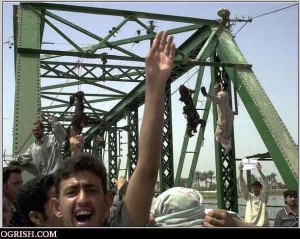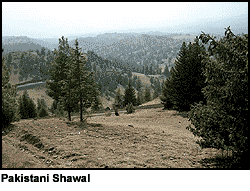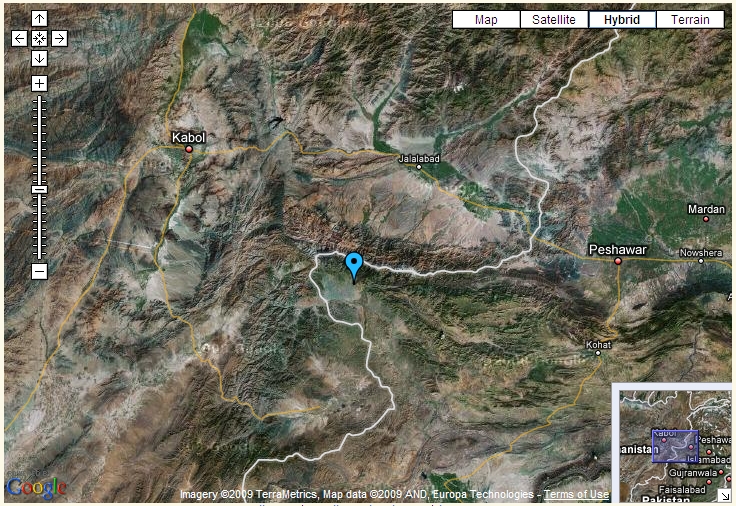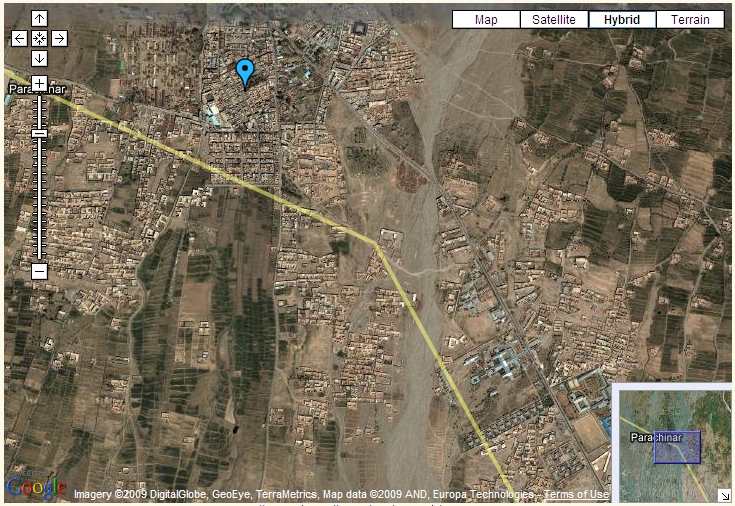Pakistan’s military offensive against the Taliban in Swat has not produced the desired effect, as commander Maulana Fazlullah and many of his fighters have escaped the region (Fazlullah is in Afghanistan). Much the same thing is happening with the Taliban in Waziristan as a result of the Pakistani offensive there.
On Tuesday, the military escorted journalists on a tour of the area, where it closely restricts access, showing piles of things they had seized, including weapons, bombs, photos and even a long, curly wig. “It all started from here,” said Brig. Muhammed Shafiq, the commander here. “This is the most important town in South Waziristan.”
But lasting success has been elusive, tempered by an agile enemy that has moved easily from one part of the tribal areas to the next — and even deeper into Pakistan — virtually every time it has been challenged.
American analysts expressed surprise at the relatively light fighting and light Pakistani Army casualties — seven soldiers in five days in Sararogha — supporting their suspicions that the Taliban fighters from the local Mehsud tribe and the foreign fighters who are their allies, including a large contingent of Uzbeks, have headed north or deeper into the mountains. In comparison, 51 Americans were killed in eight days of fighting in Falluja, Iraq, in 2004.
“That’s what bothers me,” an American intelligence officer said. “Where are they?”
The Pakistani military says it has learned from past failures in a region where it lost hundreds in fighting before. It spent weeks bombing the area before its 30,000 troops entered. It struck alliances with neighboring tribes.
But the pending campaign was no secret, allowing time for local people and militants to escape, similar to what happens during American operations in Afghanistan.
“They are fleeing in all directions,” said a senior Pakistani security official, who did not want to be identified while discussing national security issues. “The Uzbeks are fleeing to Afghanistan and the north, and the Mehsuds are fleeing to any possible place they can think of.”
Rather than fight the Pakistan military in a conventional operation, the Pakistan Taliban have declared a guerrilla operation against them. The proliferation of bombs and terrorist attacks against Pakistanis and their own infrastructure, combined with an almost pathological preoccupation with India and a host of other conspiracy theories, almost surely contributes to the troubling (and pathetically amusing if not so serious) results of a recent poll of Pakistanis.
A majority of Pakistanis see the United States as a greater threat to their country than traditional arch-rival India or the dreaded Taliban, a new opinion poll has revealed.
According to Gallup Pakistan’s poll, 59% of more than 2,700 people surveyed across the country consider the US a threat. “Eighteen percent believe India is the threat while 11% say the Taliban are a threat,” said Gallup Pakistan chairman Ijaz Shafi Gillani. He said the survey findings show that some of the most vocal anti-Taliban groups were equally opposed to the US. Some Pakistanis believe that if the US is committed to eradicating militancy, it should try to solve the Kashmir issue to help Islamabad move its troops from the eastern border with India to fight the Taliban in the northwest.
The poll group said Pakistanis were suspicious that Washington was working to control Islamabad’s strategic assets. “Earlier, anti-Americanism was confined to supporters of right-wing groups. But over the years, young, educated Pakistanis, left activists, people you’d normally expect to be pro-American modernists have turned against America,” said columnist Sohail Qalandar.
The trouble doesn’t stop there. There are serious internal political challenges soon to be faced within Pakistan and its Army.
Pakistan’s civilian and military leaders are tangling in a series of political confrontations that could lead to a constitutional crisis or worse after the New Year, officials in both Islamabad and Washington tell NBC News.
With the tenor and volume of debate rising over America’s commitment to Afghanistan, that struggle is complicating U.S. strategy to stabilize the Afghanistan-Pakistan border.
It’s not only that dozens are dying every week in suicide bombings or that there are concerns that the Pakistani military will not be able to hold the territory it has won in hard-fought battles in South Waziristan. The more profound issue, say Pakistani and U.S. officials, is the fate of President Asif Ali Zardari, who is engaged in a seemingly never-ending battles with the country’s powerful military and intelligence establishments.
On Nov. 2, legislators opposed to Zardari, along with the military and intelligence community, thwarted an attempt by his Pakistani People’s Party to hammer through an extension of the National Reconciliation Ordinance.
The innocuously named law, pushed through at the behest of the U.S. in 2007, froze criminal prosecutions against Zardari, his late wife, Benazir Bhutto, and their allies … on Nov. 2, other parties in the PPP-led coalition, along with the parliamentary opposition and the military, thwarted Zardari. Analysts in Pakistan and the U.S. say there is no chance the NRO will be renewed by the deadline, and in fact, Prime Minister Yusef Reza Gilani said this week it’s dead.
One potential issue is whether Zardari has presidential immunity for any crimes committed before he was elected. He may have it for his time in office, but it’s uncertain that he does for any crimes alleged before he assumed office … U.S. officials are said to be alarmed by the development.
The Army figures significantly in this power struggle, in that the campaign against the Taliban will recede in importance and a refocus on India will occur if a power shift occurs. Zardari has driven the campaign against the Taliban, and without him the Army likely won’t continue the operations – at least, not to the same extent.
At the same time that Pakistan is undergoing internal turmoil, the salient American question is why we are focused on Afghanistan when the danger is in Pakistan. Strange question indeed, when pressure from either side of the imaginary thing called the Durand line causes the Taliban to flee to the opposite side. Even raising the question about Afghanistan is tantamount to telling Pakistan, already crumbling, that their best military efforts against the Taliban will be met with nothing on the Afghan side when the Taliban relocate.
With Pakistan in deep trouble, we are telling them that they are the key to defeating the globalists and in the same breath that we intend to abandon them to that very enemy. Pakistan is crumbling within and harbors neurotic conspiracy theories about the threat America poses, while America is planning to place even more pressure on them to perform because we are searching for an exit strategy from Afghanistan. These are not good days for Pakistan.







